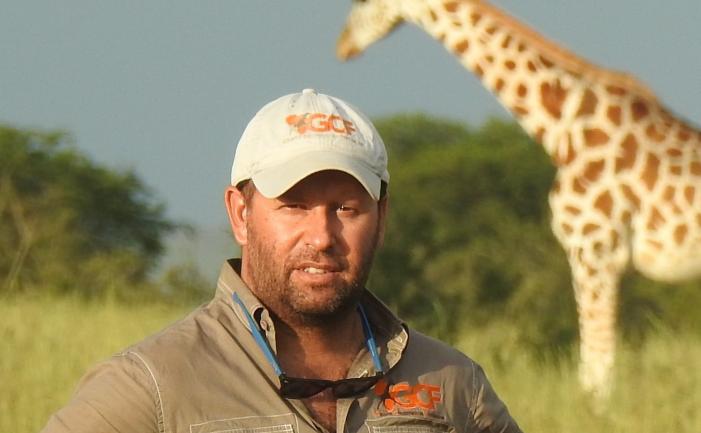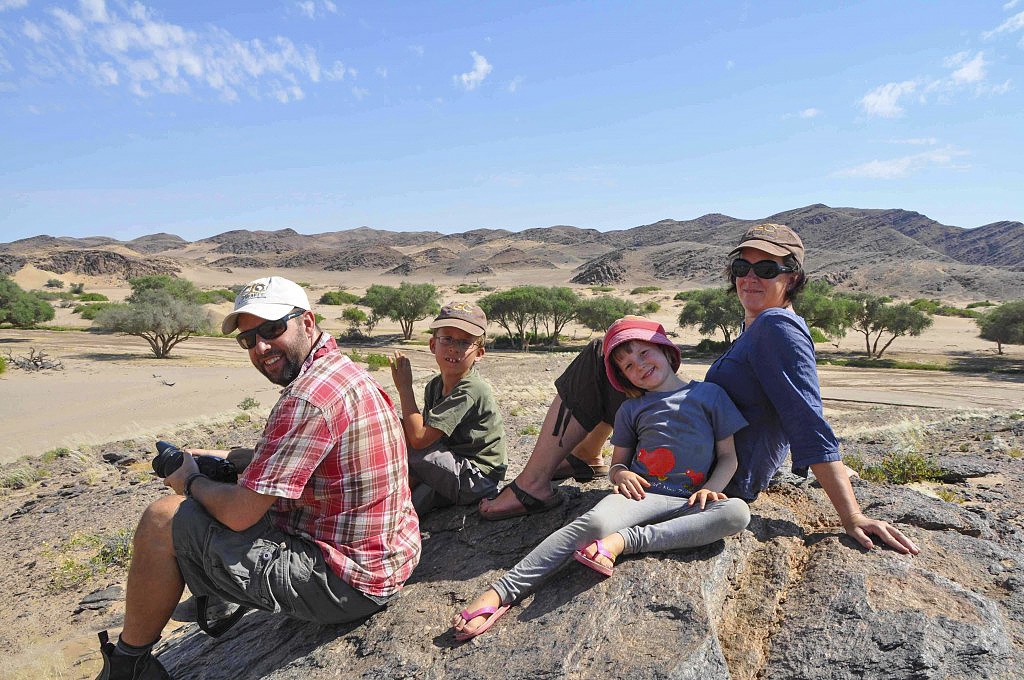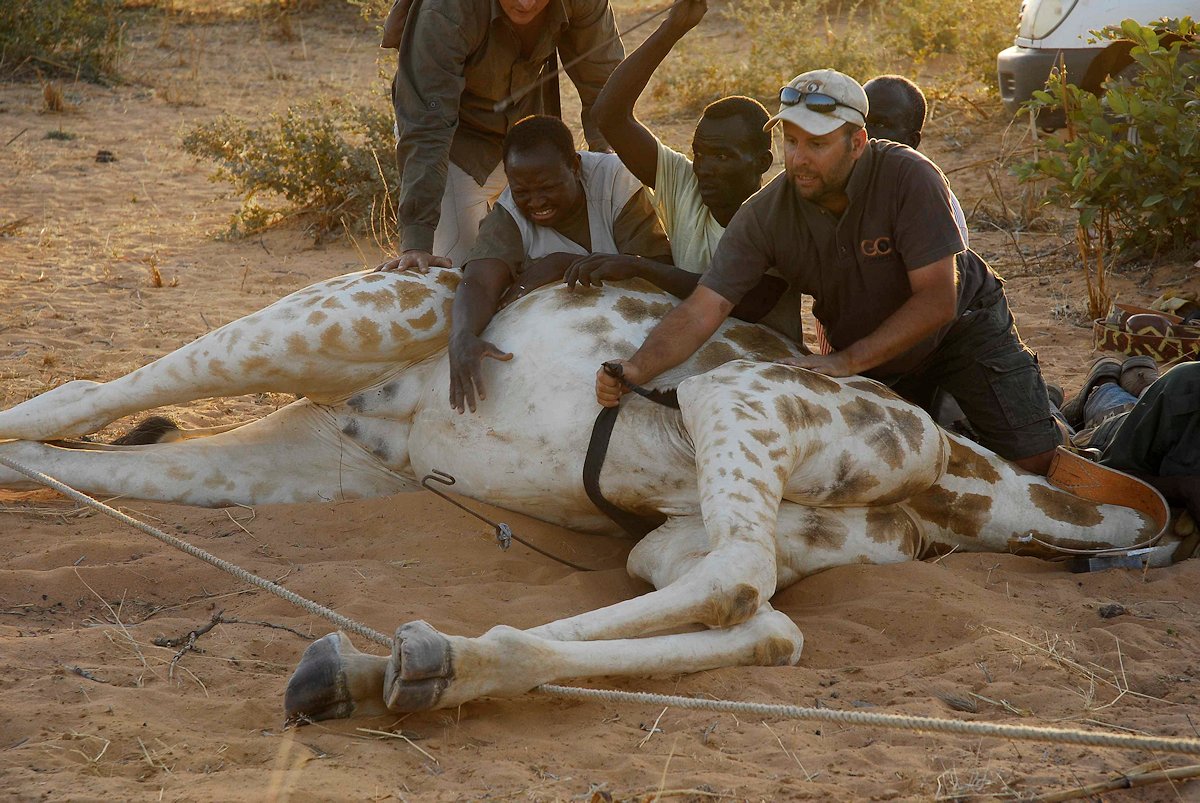Giraffe Conservation Foundation
Focussed on giraffe, a species facing a 'silent extinction'..
Dr Julian Fennessey and the Giraffe Conservation Foundation (GCF)
GCF is currently involved in giraffe conservation initiatives in 15 African countries. Their involvement ranges from programme implementation to providing technical support to partners, from conservation monitoring to hands-on conservation actions, from direct to indirect support.
In the 1980s, the total number of all giraffe in Africa was estimated at more than 155,000 individuals. Today, the current Africa-wide giraffe population is thought to be approximately 111,000 individuals. The IUCN Red List has declared Giraffe as vulnerable as a species, but with a number of sub-species listed as Critically Endangerred or Near Threatened.
The Giraffe Conservation Foundation (GCF) is the only NGO in the world that concentrates solely on the conservation and management of giraffe in the wild throughout Africa.
Dr Fennessey added: “The time is now. If we don’t come together to save giraffe it could be too late.”
ABOUT JULIAN FENNESSEY
Dr. Fennessy is the co-founder, executive director, and conservation scientist of the Giraffe Conservation Foundation (GCF). It is the only international organization dedicated to securing the conservation of giraffe in the wild.
As one of the foremost experts on giraffe, he is also founder and co-chair of the IUCN SSC Giraffe and Okapi Specialist Group, which brings together the world’s experts on these two species. Julian has initiated or supported research and conservation projects across Africa for many years, working closely with all stakeholders, from communities to academics, NGOs, and governments, on all nine currently recognized subspecies. The experienced gained from involvement in projects has enabled Julian to understand the needs of giraffe conservation in various parts of Africa as well as the people that live alongside them.“I am absolutely amazed that no one has a clue,” said Dr Fennessey. “This silent extinction. Some populations less than 400 populations. That is more endangered than any gorilla, or almost any large mammal in the world.
Listen to Julian on a podcast talk about the work of GCF - August 2020.
Understanding Giraffe Movements in Southern Africa (from GCF Newsletter 2022)
Our Twiga Tracker initiative is the largest GPS satellite tracking study ever conducted on giraffe. To conserve giraffe and the diverse ecosystems they inhabit, we need to better understand where giraffe move, how much space they need, and how they utilise their habitats across a range of different environments.
Working with different suppliers, we continue to trial new tagging technology and recently started using innovative Ceres solar-powered GPS satellite ear tags for giraffe. These lightweight ear tags can be easily and quickly fitted, increasing the giraffe’s welfare. To better understand Southern giraffe we recently fitted 14 giraffe with ear tags in Hwange National Park (Zimbabwe) in collaboration with ZimParks. After this first-of-its-kind operation in the park, we are now learning more about giraffe movements within the larger Kavango-Zambezi Transfrontier Conservation Area. It was also a great opportunity for our experienced team to build local capacity in Zimbabwe by training park rangers and conservationists in best practice giraffe capture techniques. In the Hoanib River in northwest Namibia, we replaced some of the older ossi-units with the new ear tags and also increased the range of our Twiga Tracker Initiative by tagging two giraffe in the communal Doro !nawas Conservancy. These tags are helping to monitor the giraffe population in the area, which was augmented by a conservation translocation in 2020. During regular surveys, we continue to see familiar and new (giraffe) faces and we are excited to learn more about where they roam during times when we do not spot them regularly.SPECIES OF GIRAFFE
Recent research (by GCF) has shown that there is not only one, but four distinct species of giraffe (previously it was thought that it was a single species with 7 recognised sub-species.
The four distinct species are Masai giraffe (G. tippelskirchi), Northern giraffe (G. camelopardalis), Reticulated giraffe (G. reticulata) and Southern giraffe (G. giraffa). The Angolan giraffe (G. g. angolensis) and South African giraffe (G. g. giraffa) are the two subspecies of the Southern giraffe. Nubian giraffe (G. c. camelopardalis), Kordofan giraffe (G. c. antiquorum) and West African giraffe (G. c. peralta) are the three subspecies of the Northern giraffe. Rothschild’s giraffe is genetically identical to the Nubian giraffe. As the nominate species, Nubian giraffe takes precedence and Rothschild’s giraffe is thus subsumed into it.
All four giraffe species and their subspecies live in geographically distinct areas throughout Africa.
Source: Giraffe Conservation Foundation.
Julian is a true giraffe guru. He is the founder and co-chair of the IUCN SSC Giraffe and Okapi Specialist Group and completed his PhD on Namibia’s desert-dwelling giraffes. You won’t meet a couple more dedicated to the conservation of giraffes in the wild. There are few species more iconic and representative of Africa than giraffes, and I’ve seen them pretty much everywhere I’ve ever travelled in Africa, so why are folks like Julian and Steph worried about their future? - Dr Tammie Matson (zoologist and author).
GIRAFFE RELOCATION (and the role of giraffe in Africa)
In addition to their cultural importance and their rather iconic status in Africa, giraffe are a critically important part of savannah ecosystems. Did you know that giraffe are important pollinators? They also shape many of the tree species they feed upon and can change their growth patterns through intensive browsing. If giraffe are removed from an ecosystem, some plants change their physical structure and growth, which has cascading effects for the whole ecosystem right down to the soil nutrients and insect communities. Returning giraffe to their historical ranges where they have become locally extinct helps to restore these complex ecosystem processes.
Carefully planned and managed giraffe translocations are a vital tool in helping to restore the balance to these ecosystems for generations to come. GCF have has a strong track record of successful giraffe translocations.
Moving giraffe is not an easy task and requires careful planning and preparation. A giraffe translocation is an incredibly complex and expensive undertaking that requires careful planning.
To give you an idea what is involved, here are just a few things to consider before the first Angolan giraffe can set foot on Angolan soil again (hopefully in 2023/4):Strong Partnerships: Working closely with the Angolan government and our partners at African Parks we have identified Iona National Park as the final destination for the first Angolan giraffe to return to Angola.
Viability Assessment: Such an assessment looks at the habitat needs of giraffe but also considers social aspects. Successful conservation is only possible when the people who share their living space with wildlife are given a voice and become an integral part of the process. During our viability assessment for reintroducing giraffe to Iona National Park in Angola, it was important to engage with the local communities to understand their needs and concerns. Finding the Way: By bringing giraffe back to Iona National Park we are entering uncharted territory - literally! Our GCF team recently hit the road to find the best route to transport giraffe from Namibia to Angola. Assessing road conditions, border crossings and identifying the best spot to release these gentle giants were part of this mission. The Move: With all these previous steps sorted, we are almost ready to start with the capture. Everything is in place, except for one thing: we still need to raise the necessary funding for this exciting and important giraffe conservation project! Post-Translocation Monitoring: But it does not end with the actual release. A critical part of any translocation is to monitor their movements after the release. To find out how they settle into their new home, we are planning to tag each giraffe with a solar-powered GPS satellite ear tag.Source: Giraffe Conservation Foundation.
ARTICLES OF INTEREST
Giraffe Conservation Foundation - Annual Report 2023/24 (PDF)
Angolan Giraffe Return to Iowa National Park in Angola - July 2023.
West African giraffe conservation success in Niger after daring translocation - November 2022.
Giraffe Conservation Foundation - Annual Report 2021/22 (PDF)
The Longest Wild Giraffe Translocation Ever undertaken by road. Majete WR, Malawi - October 2021.
GCF library of newsletters, articles, papers and other published materials.
Halting the demise of giraffe by Travel Africa - January 2017
Giraffe Conservation Foundation - Annual Report 2019/20 (PDF)
Africa’s Giraffe – A Conservation Guide (PDF)



